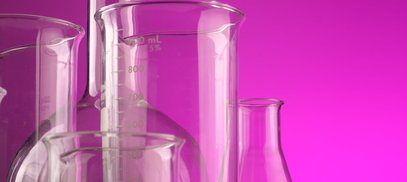Forensic cosmetic scientist Dr Barbara Brockway, gave an insightful presentation at our 2021 Literacy for Learning Secondary School Festival of Science and Imagination. Here she discusses how she got into the cosmetic science industry.
When I was very young, I would drive my mother mad by going in the bathroom and mixing together her creams, shampoos and even toothpaste to create my own pastes and potions. Then as soon as the magnolia tree blossomed, I was outside crushing petals to create my own perfume. For my 7th birthday I was given a chemistry set and discovered the joy of mixing bicarbonate of soda with vinegar to create a volcano of fizz.
Little did my mother know that I was destined to work in the cosmetic industry. Of course, without an understanding of basic science, my early attempts of trial-and-error mixing were doomed to end up in the bin. However, at school I loved science and soon understood why the acetic acid in vinegar (CH3COOH) reacted with the bicarbonate of soda (NaHCO3) to release carbon dioxide gas (CO2) and I became a cosmetic scientist in the making.
Next time you go into the supermarket, take a long look at the shelves of personal care products. Incredibly, every personal care product started with a cosmetic scientist with a large empty beaker working at the bench.
With a background in chemistry, the cosmetic scientist knows just the right amount of say… anhydrous citric acid powder to blend with bicarbonate of soda to create a bath bomb. They know how to choose the crystal size to control the rate of fizz so the fizz lasts just long enough for you to enjoy your bath and not fizz away in seconds.
Then to attract you to their bath bomb in preference to other bath bombs, they can add colour, fragrance and cosmetic ingredients to make your skin feel nice, etc. Clever formulators can even create bath bombs which change colour or are shaped so the bath bomb moves like a torpedo in your bath. And that is just a bath bomb based on the chemical equation below.

Think about all those other personal care products you see on the supermarket shelf. A cosmetic chemist can create them all.
There are roles for everyone in the cosmetic industry, from those who have a good sense of smell so can create wonderful perfumes to those whose sense of touch enables them to formulate creams with delightful feel. The industry loves to adopt the latest discoveries and adapt them to our personal care needs. Biochemists, psychologists, microbiologists, engineers, experts in AI and algorithms. In fact it is easier to list the sciences that are not involved in creating cosmetics than those that are involved.
I was often the student with the lowest exam mark (even in the sciences that I loved) and always struggling with reading difficulties. I left school with very few qualifications but with a passion for applying all I learnt to real life situations.
From my first job working as a lab technician, studying science one day a week at the local college, I now have a PhD and a career in the cosmetic industry that takes me all over the world. Why not think about a career in the cosmetic and personal care industry?
During our Literacy for Learning Secondary School Festival of Science and Imagination, forensic cosmetic scientist Dr Barbara Brockway explored how personal care products are created using a combination of science and art and demonstrated the stages of making a shower gel in the lab. She further discussed the importance of literacy and communication in the creative sciences. Learn more about our CPD training for Literacy in Science and focused training across other subject disciplines.
